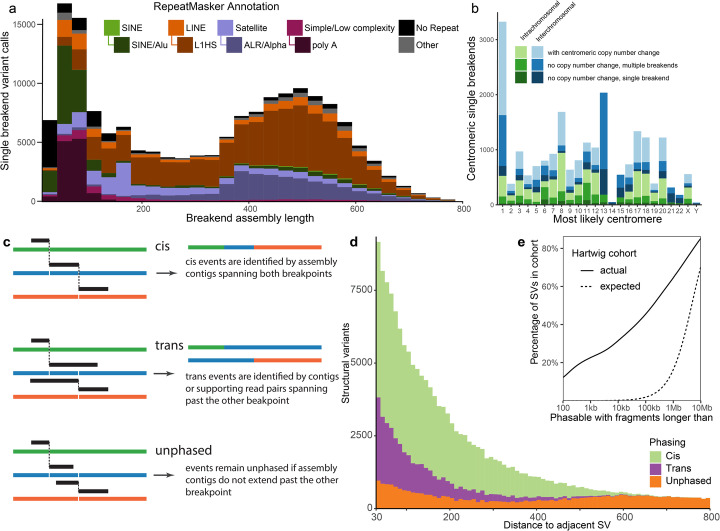Fig. 4.
Classification of single breakends and structural variant phasing. a RepeatMasker annotations indicate the majority of somatic single breakends are due to mobile element translocations, or centromeric breaks. b Most likely centromere for single breakends containing centromeric or peri-centromeric repeats based on realignment of breakend sequence to hg38. Shading indicates whether prediction is consistent with the copy number change across the centromere. Chromosome 1 has an excess of inter-chromosomal breaks to centromeric sequence. Chromosomes 13, 14, 15, 21, and 22 have insufficient non-gap p-arm sequence for a centomeric copy number change to be called. c Phasing of structural variants can be determined when breakend assembly contigs span multiple breakpoints. d The majority of variants within 600 bp can be phased using breakend assembly. e Somatic SVs are highly clustered with 22% of all SVs in the Hartwig cohort potentially involving a DNA fragment of 1kbp or less

